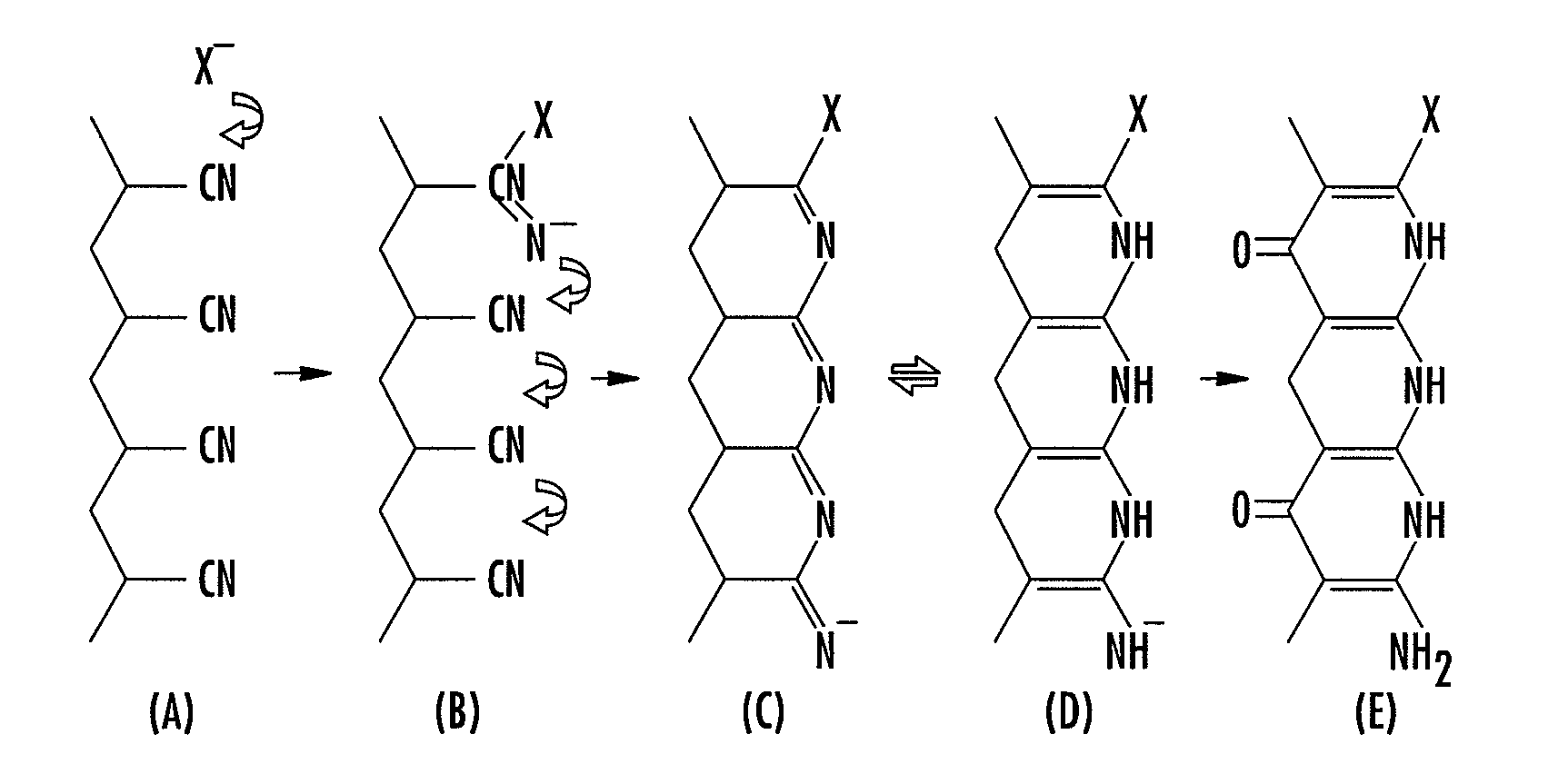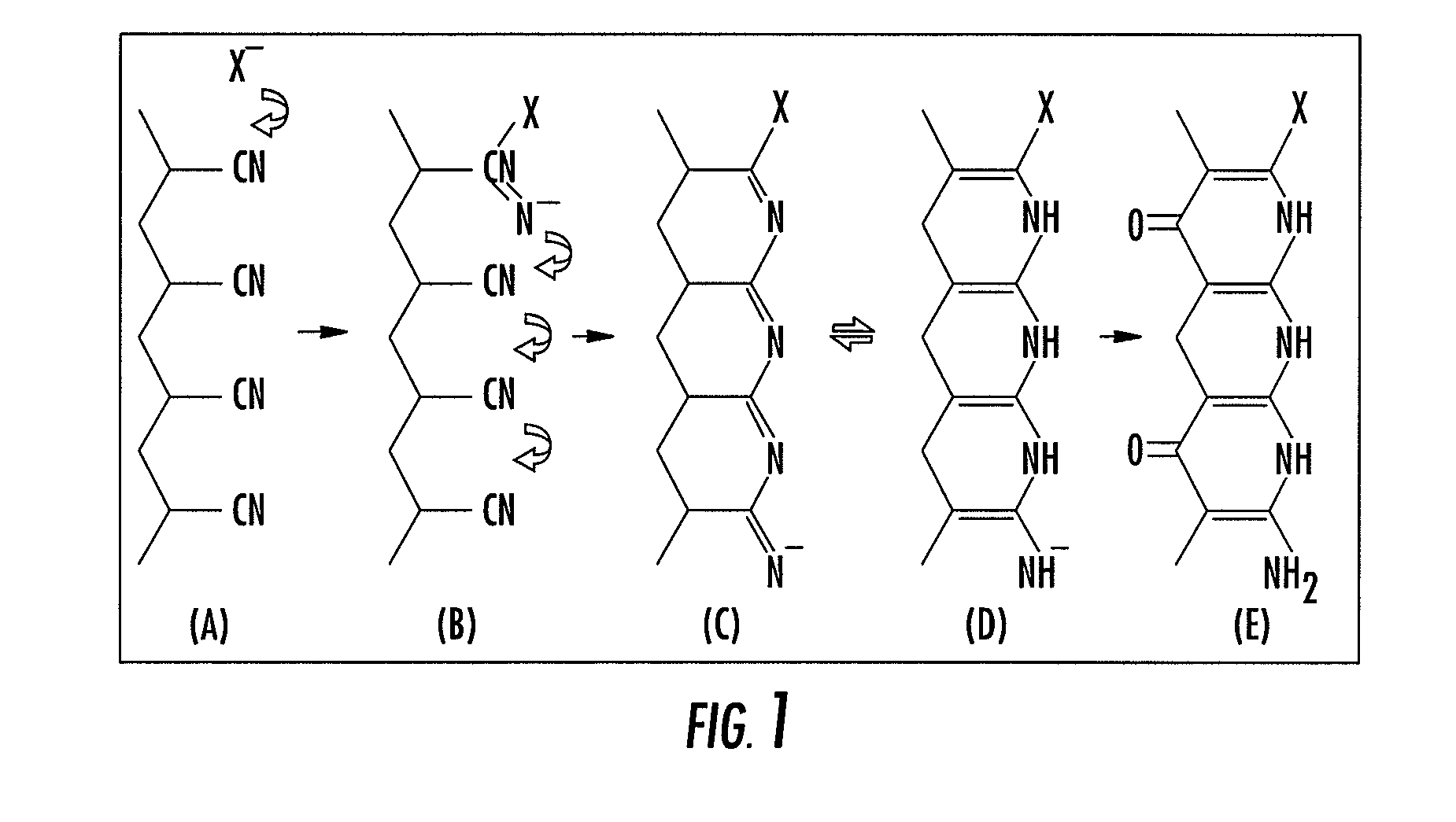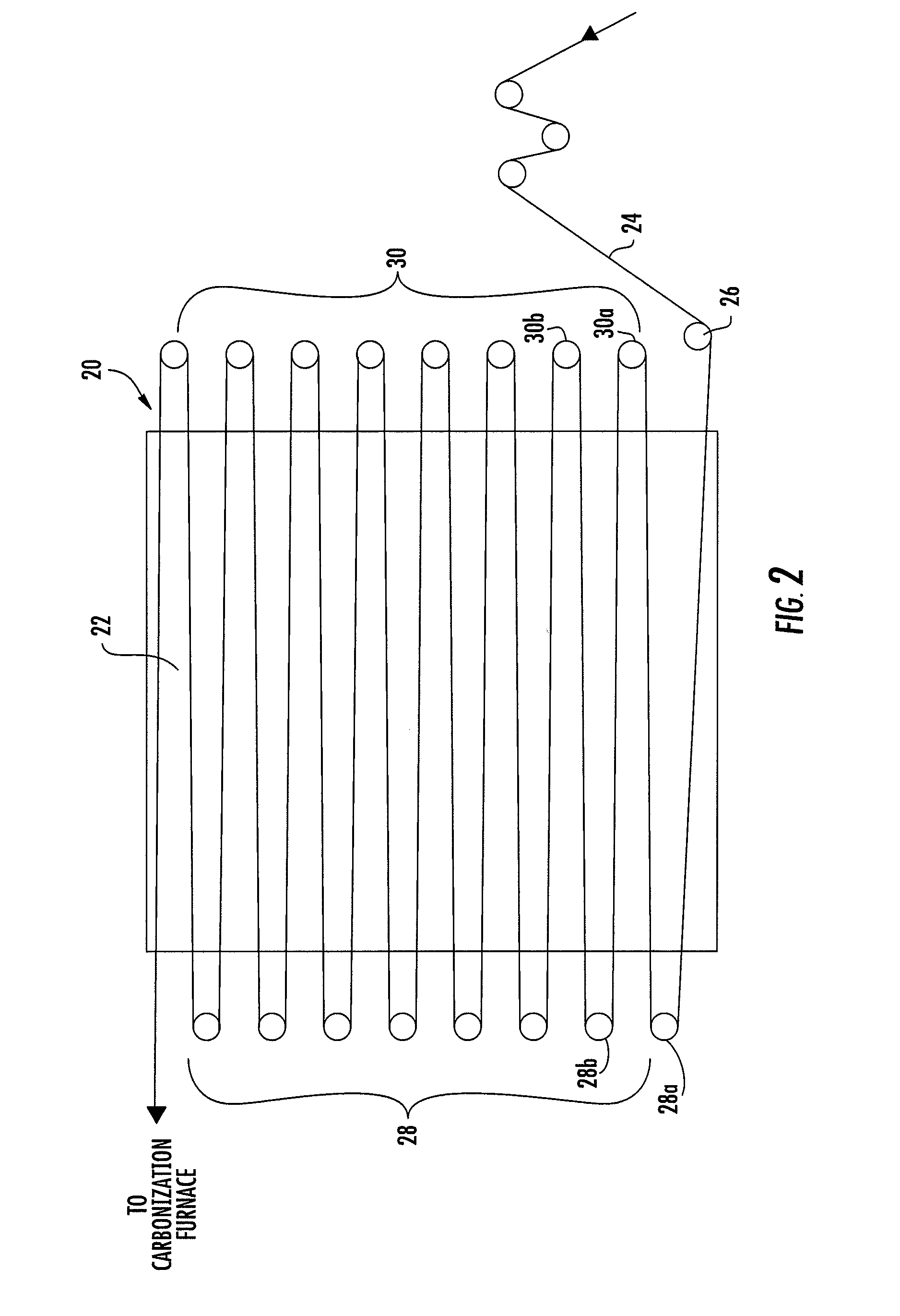Carbon fibers having improved strength and modulus and an associated method and apparatus for preparing same
a technology of carbon fibers and fibers, which is applied in the field of carbon fibers, can solve the problems of increasing tensile strength and modulus, having mixed results, and decreasing tensile strength, and achieves the effects of improving strength and modulus, improving orientation, and improving overall cumulative stretch of fibers
- Summary
- Abstract
- Description
- Claims
- Application Information
AI Technical Summary
Benefits of technology
Problems solved by technology
Method used
Image
Examples
examples
[0094]In the examples listed in Tables 6-8, polyacrylonitrile (PAN) precursor fibers were made from a copolymer consisting of 98 mol % acrylonitrile and 2 mol % methacrylic acid by an air gap wet spinning process. The starting copolymer had an intrinsic viscosity of about 2.0 deciliters per gram when determined using concentrated sodium thiocyanate as the solvent. In the examples in Table 9, PAN precursor fibers were made from a terpolymer consisting of 1.5 mol % itaconic acid and 5.5 mol % methyl acrylate by a wet spinning process. In all the examples, the spinning and coagulant solutions were based on aqueous sodium thiocyanate. The fibers were stretched during spinning so that their length in tow form became up to about six times greater after steam stretching compared to their length after extrusion from the spinnerettes. The dried precursor fibers contained about 1 wt. % of a silicone-based finish oil, and had filament deniers of 0.60 (Table 6), 0.8 (Table 7), 1.33 (Table 8) an...
PUM
| Property | Measurement | Unit |
|---|---|---|
| Temperature | aaaaa | aaaaa |
| Temperature | aaaaa | aaaaa |
| Temperature | aaaaa | aaaaa |
Abstract
Description
Claims
Application Information
 Login to View More
Login to View More - R&D
- Intellectual Property
- Life Sciences
- Materials
- Tech Scout
- Unparalleled Data Quality
- Higher Quality Content
- 60% Fewer Hallucinations
Browse by: Latest US Patents, China's latest patents, Technical Efficacy Thesaurus, Application Domain, Technology Topic, Popular Technical Reports.
© 2025 PatSnap. All rights reserved.Legal|Privacy policy|Modern Slavery Act Transparency Statement|Sitemap|About US| Contact US: help@patsnap.com



